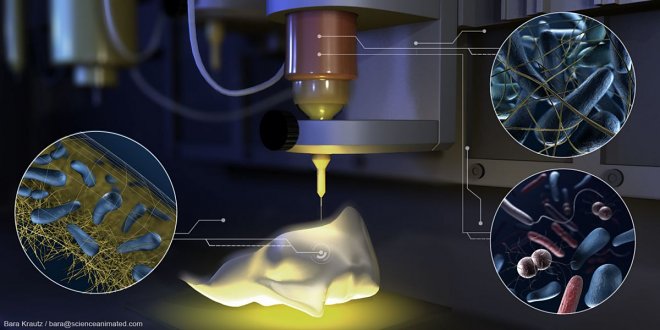NEWS
Swiss researchers created a 3D printer that prints live matter

Three-dimensional printing has come a long way before reaching the current technological heights. A group of researchers from the Higher Technical School of Zurich (ETH) has developed a platform for 3D printing of living biochemical structures using ink mixed with bacteria. Depending on the purpose of the object for its manufacture, various bacteria are used.
The ink contains a biocompatible hydrogel forming the skeleton of the object. In the process of operating a 3D printer, scientists can use up to four different inks, each containing several types of bacteria. Combination of hydrogel ink with bacteria allows you to remove physical pain and keep moisture. In particular, one of the options for using live printing can be the treatment of burns.
However, this is only the beginning. Scientists still have a lot to do before this technique becomes commercially viable. Among the main problems - the speed of printing and scalability of technology.
If they can be solved, the researchers will have a real opportunity to create industrial enterprises for the production of "living" objects, which will find their application in medicine and biotechnology.


